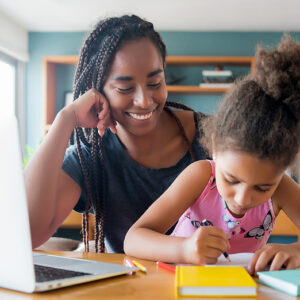Amid talk of student mask mandates and COVID restrictions, more New Hampshire parents are considering alternatives to traditional public schools after a year of remote learning burnout.
Lori Lipke of the New Hampshire Homeschool Coalition said many families who opted to homeschool last year in reaction to the remote learning imposed by public schools have decided the homeschool lifestyle is a better fit.
“I’m seeing a lot more people who have decided to continue homeschool rather than send their children back to school,” Lipke said.
It’s not just New Hampshire. The education news site Chalkbeat reports “enrollment in preschool to 12th grade dropped by 2.6 percent across 41 states last fall,” with New Hampshire losing 3.75 percent of its public school students.
Many of those students are now being homeschooled.
According to the United States Census Bureau, homeschooling has exploded in the country in the past year. Homeschool households typically make up 5.4 percent of all households in the country, but after months of COVID-19 shutdowns and remote learning in the spring of 2020, the number had doubled to 11.1 percent in the fall of 2020 as the new school year began.
In New Hampshire, according to the Census Bureau, the percentage of homeschoolers went from 3.4 percent of all households in the spring of 2020, to more than 6 percent of all households in the fall.
Lipke said many people tried to do the remote learning programs given to them by their public school, but struggled with the rigid curriculum. Homeschool programs don’t need expensive curriculums and many families discovered they could offer a better education tailored for their children on their own, she said.
“The difference between remote school and homeschool is you are still doing public school work and public school curriculum with remote learning. With homeschool, you’re free to teach whatever you want. It’s a lot more relaxed,” she said.
Homeschool families still need to teach basics like language arts, math, science, and history. The education must be reviewed and evaluated at the end of the year, as well. But, homeschool families are able to develop the education to meet their child’s individual needs, Lipke said.
Homeschool isn’t the only non-public school option seeing a surge. Alison Mueller with the Roman Catholic Diocese of Manchester’s school system said Catholic schools have seen a significant increase in enrollment since the pandemic started.
“We did see a surge after all of the schools went remote at the end of last year,” Mueller said.
Catholic schools in New Hampshire saw 500 new students in the fall of 2020, and Mueller said the schools are anticipating an additional 200 students statewide — a number that could continue to rise.
“We’re still enrolling students every single day,” Mueller said.
Part of the attraction to the Catholic school option, aside from the high quality of the education, is the relaxed COVID standards in the schools, she said. Last year, Catholic schools retained in-person learning for much of the school year, and this year the schools plan to relax masking requirements.
“This year, we are implementing an optional mask policy for employees, and parent choice for families, to start the year,” she said.
If the pandemic changes and masking becomes necessary the schools will remain flexible enough to adjust to the community conditions, she said. The school will also not mandate the vaccines for any employee or student.
“That’s not a requirement we are comfortable implementing,” Mueller said.
New Hampshire’s public school enrollment has been in decline for at least the last 10 years. In 2010, there were 194,022 k-12 students in the state. In 2020, that dropped to 167,836 and is still falling.




